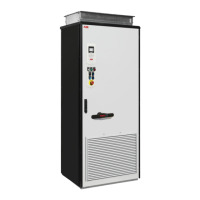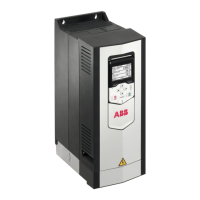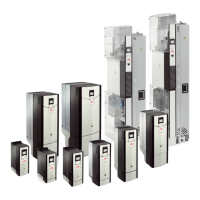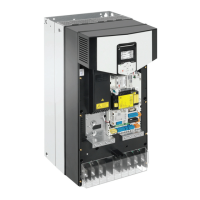Resistor braking 161
Resistor braking
Contents of this chapter
This chapter describes how to select, protect and wire brake choppers and resistors. The
chapter also contains the technical data.
Operation principle and hardware description
The dive can be equipped with optional built-in brake chopper (+D150). Brake resistors
are available as add-on kits.
The brake chopper handles the energy generated by a decelerating motor. The chopper
connects the brake resistor to the intermediate DC circuit whenever the voltage in the
circuit exceeds the limit defined by the control program. Energy consumption by the
resistor losses lowers the voltage until the resistor can be disconnected.
Planning the braking system
Selecting the default brake circuit components
1. Calculate the maximum power generated by the motor during braking (P
max
).
2. Select a suitable drive, brake chopper and brake resistor combination for the
application from the rating table. The braking power of the chopper must be greater or
equal than the maximum power generated by the motor during the braking.
3. Check the resistor selection. The energy generated by the motor during a 400-second
period must not exceed the resistor heat dissipation capacity E
R
.
Note: If the E
R
value is not sufficient, it is possible to use a four-resistor assembly in
which two standard resistors are connected in parallel, two in series. The E
R
value of
the four-resistor assembly is four times the value specified for the standard resistor.
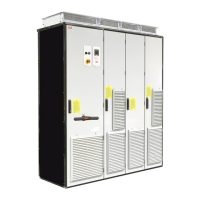
